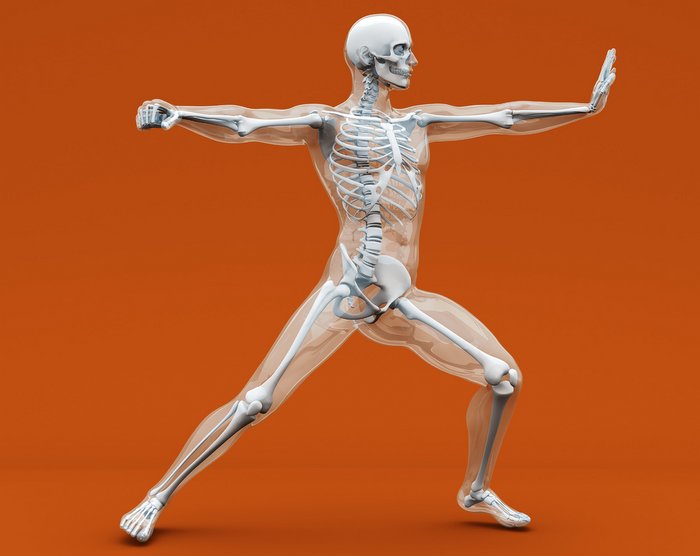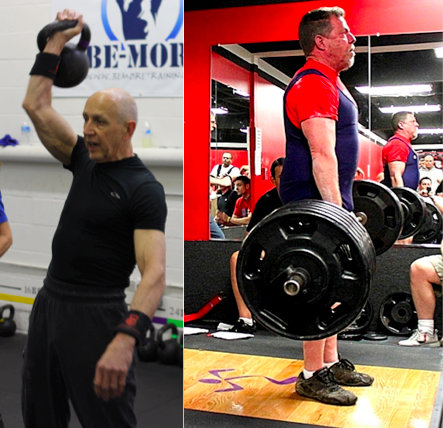
The topics of osteoporosis, sarcopenia, and the frailty syndrome are extremely important for anyone over the age of 60 or anyone planning to be in the future. This article will look at the need for preventative measures, the means to healthy aging of the musculoskeletal system, and the steps you can take to ensure that you will live out your years on this earth strong and physically capable.
Osteoporosis is a well-known condition involving decreased bone density with aging that most people are familiar. Sarcopenia is a disease of muscle loss and weakness that is the lesser known evil-twin of osteoporosis but just as important to understand. These two conditions comprise the public health problem known as frailty syndrome, which has unfortunately become increasingly common in aging adults.
Frailty syndrome is technically defined as “a decline in the functional reserves with several alterations in diverse physiologic systems, including lower energy metabolism, decreased skeletal muscle mass and quality, and altered hormonal and inflammatory functions.”
For a more user-friendly definition picture in your mind a stereotypical “old person.” You think of little gray haired men and women who are hunchbacked and have trouble walking. They are too weak to even stand, and look as if they would shatter with a minor fall. That image is what many of us now associate with the word “old.” No one wants to become the embodiment of this image as we age. We cannot slow the passing of the years, our chronological age, but we do not have to succumb to frailty. Strength training is not just for the young. You can become stronger and more resilient in your 60’s, 70’s, 80’s and even 90+. Strength training is arguably more important for the aging person and absolutely essential for healthy aging.
Frailty is what makes falls the leading cause of both fatal and nonfatal injuries among older adults.[1] Falls result in disability, functional decline and reduced quality of life. Fear of falling can cause further loss of function, depression, feelings of helplessness, and social isolation.[2]
The financial cost of frailty is huge. In a 2002 study, the cost of an individual fall averaged between $14,306 and $21,270.[3] The cost increases rapidly with age and could easily exceed most peoples retirement savings. In 2013, the total direct medical costs of fall injuries for people 65 and older, adjusted for inflation, was $34 billion, and is expected to reach $54.9 billion by 2020.[4] [5]
Fortunately there are steps we can take to avoid the bleak and costly condition of frailty as we age. Physical exercise is well recognized by both the layperson and the medical community as an essential part of a healthy lifestyle. Doctors will tell you the importance for “weight bearing” exercise when it comes to osteoporosis and sarcopenia. Unfortunately, there are only a very small percentage of physicians who actually know how to properly prescribe and program weight bearing, bone strengthening exercises.
Physicians are trained to diagnose and treat disease, but most do not have the expertise to write exercise prescriptions or coach weight training techniques. It is ironic that exercise, one of the most powerful disease-preventing modalities, is not taught in medical education.
In my opinion as a strength coach and fitness professional, that lack of basic education is why there seems to be lack of information coming from the medical community about effective weight-bearing exercise. If you look at the Surgeon General’s Report on Bone Health and Osteoporosis, strength training is underemphasized and casually mentioned along other activities such as walking, dancing and gardening. No one ever seems to mention that those who have the strongest muscles (such as weight lifters and powerlifters) also have the most dense bones, and never succumb to osteoporosis or sarcopenia.
It’s understandable why a physician who is not also a trained strength & conditioning specialist would not elaborate on such a topic, but most will confirm that loading the axial skeleton is what increases osteoblast activity, resulting in bone production. Because of the body’s hardwired adaptive response to loading, the heavier the load is, the stronger the bone. However no doctor in their right mind would tell their patient to go lift the heaviest weight they possibly can, especially if that person was already showing the signs of frailty syndrome.
I have the unique position of being strongman and a strength coach who has worked with the senior population for the last 10 years. As a young trainer, I begun my career at a retirement community, and in the same calendar year won the Maryland Strongest Man contest. I also did a stint working as a strength assistant for the Baltimore Ravens. I have since gone on to open my own gym and work with people of all ages and backgrounds. Senior fitness was my first paid position as a strength professional, and I still teach a weekly class at the same retirement community at which I started my career.
My work with seniors has highlighted the importance of the role strength training plays in health and longevity and countering the negative effects of frailty syndrome. I have seen people of 70, 80 and 90 years of age who, because of regular strength training, do not fit the characteristics we associate with “old.” I have documentation of post-menopausal women (those most at risk for osteoporosis) I have coached achieving increased bone mineral density measured by DEXA scans.

I know how to program advanced powerlifting techniques and scale them to the senior population, and as much as I’d like to say “follow this exercise program to stronger bones” there are many things to consider in exercise prescription. There are obvious things such as which exercises for how many sets and reps, but there are more complex things like needs analysis, individual body mechanics, safety and technique. Just as a doctor would not write a drug prescription to a patient he has never met, I cannot write a cookie-cutter program to cover everyone reading this blog post. That being said, in part 2 of this article, I will cover some general techniques and principles for strength training an aging population. With the proper application of resistance training our potential for strength is limited only by the number of years we have left to train. Exercise is an individual responsibility and those who strive for strength will achieve it at any age. Survival truly is, of the strongest.
Editor’s comment:
The importance of this topic cannot be overstated. Dan has done an excellent job describing the problem we are facing with frailty in our ever-growing aging population. There is an unmet need for real strength training programs for our seniors that are both effective for reversing/preventing frailty and safe. If you are a trainer looking to make a huge impact on public health, start acquiring a skill set to work with this population. Dan has considerable experience and expertise in this area and is going to lay out some general training principles in Part II of this post so stay tuned…
****
Dan Cenidoza, BS, CSCS is a personal trainer, professional strongman and owner of Art & Strength in Baltimore, Maryland. He has a degree in exercise science and specializes in kettlebells and strength & conditioning. His mission is to instruct and inspire people to live stronger, healthier lives. artandstrength.com facebook.com/artandstrength
References:
[1]Centers for Disease Control and Prevention, National Center for Injury Prevention and Control. Web–based Injury Statistics Query and Reporting System (WISQARS) [online]. Accessed August 15, 2013
[2]Rubenstein LZ. Preventing falls in the nursing home. Journal of the American Medical Association 1997;278(7):595–6.
[3]Shumway-Cook A, Ciol MA, Hoffman J, Dudgeon BJ, Yorston K, Chan L. Falls in the Medicare population: incidence, associated factors, and impact on health care. Physical Therapy 2009.89(4):1-9.
[4]Stevens JA, Corso PS, Finkelstein EA, Miller TR. The costs of fatal and nonfatal falls among older adults. Injury Prevention 2006a;12:290–5.
[5]Englander F, Hodson TJ, Terregrossa RA. Economic dimensions of slip and fall injuries. Journal of Forensic Science 1996;41(5):733–46.trial. The Gerontologist 1994;34(1):16–23.